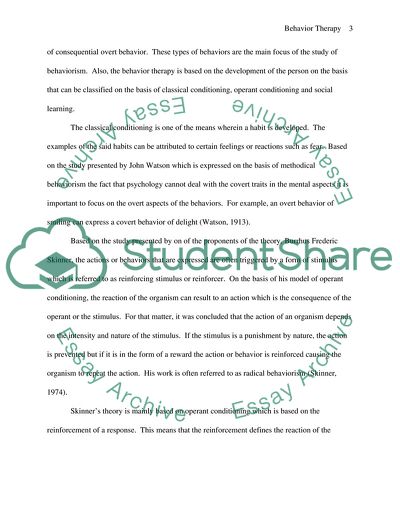Cite this document
(Behavior Therapy Theory Report Example | Topics and Well Written Essays - 1250 words, n.d.)
Behavior Therapy Theory Report Example | Topics and Well Written Essays - 1250 words. https://studentshare.org/psychology/1716627-behavior-therapy-theory
Behavior Therapy Theory Report Example | Topics and Well Written Essays - 1250 words. https://studentshare.org/psychology/1716627-behavior-therapy-theory
(Behavior Therapy Theory Report Example | Topics and Well Written Essays - 1250 Words)
Behavior Therapy Theory Report Example | Topics and Well Written Essays - 1250 Words. https://studentshare.org/psychology/1716627-behavior-therapy-theory.
Behavior Therapy Theory Report Example | Topics and Well Written Essays - 1250 Words. https://studentshare.org/psychology/1716627-behavior-therapy-theory.
“Behavior Therapy Theory Report Example | Topics and Well Written Essays - 1250 Words”. https://studentshare.org/psychology/1716627-behavior-therapy-theory.


